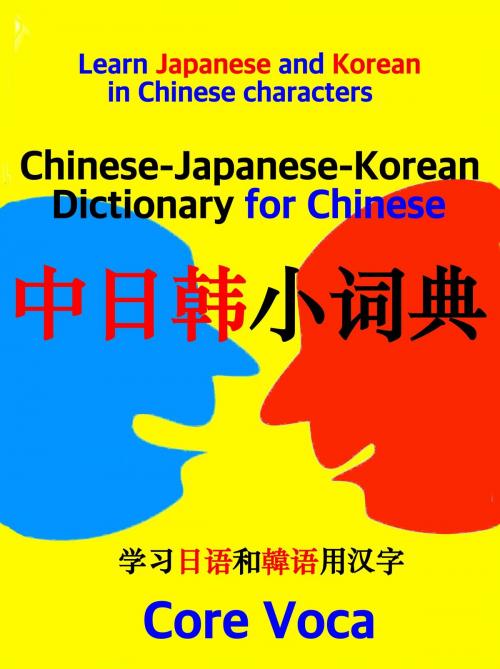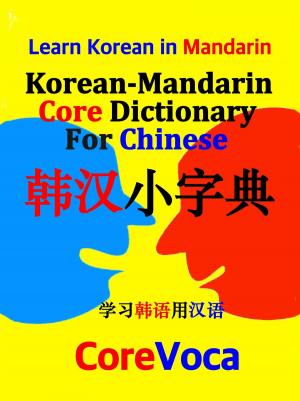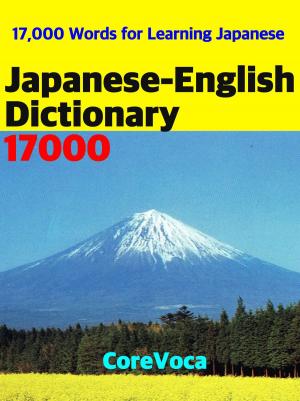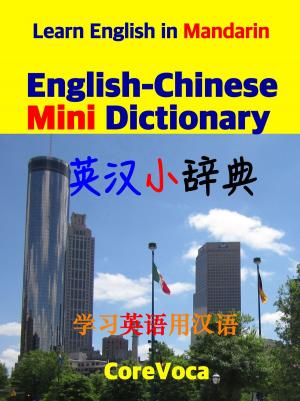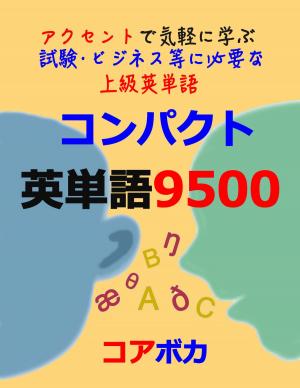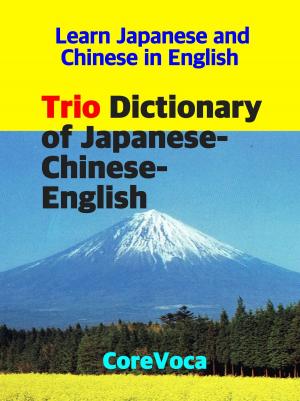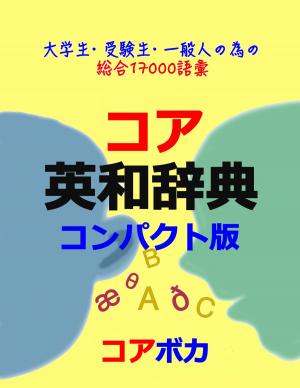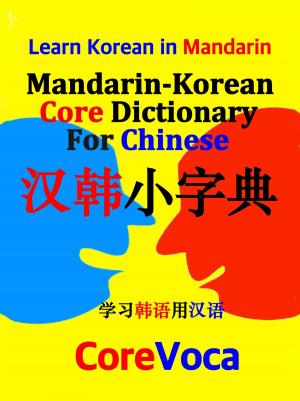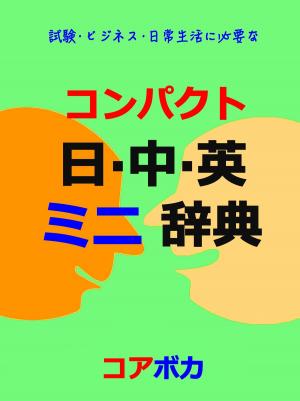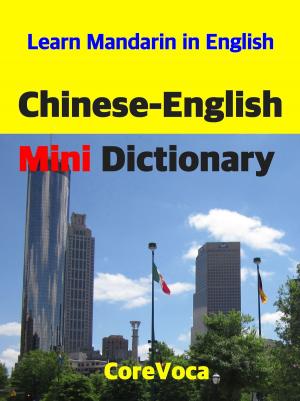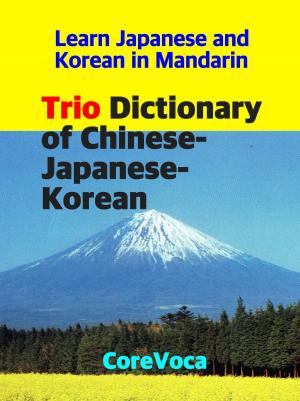Chinese-Japanese-Korean Dictionary for Chinese
Learn Japanese and Korean in Chinese characters
Nonfiction, Reference & Language, Foreign Languages, Korean, Japanese, Dictionaries| Author: | Taebum Kim | ISBN: | 1230001297669 |
| Publisher: | Core Voca | Publication: | August 3, 2016 |
| Imprint: | Language: | English |
| Author: | Taebum Kim |
| ISBN: | 1230001297669 |
| Publisher: | Core Voca |
| Publication: | August 3, 2016 |
| Imprint: | |
| Language: | English |
This book lists approximately 4,800 core standard Chinese (Mandarin) words with Japanese and Korean equivalents. Main entries are in Pinyin (Romanized standard Chinese pronunciation) followed by Chinese characters (both simplified and traditional if applicable) and pasts of speech label ([n.] for nouns and [v.] for verbs) in the first line. In the second line, the entry’s Romanized Japanese equivalents with Kana (Japanese characters) and Chinese characters, if any. In the third line, the entry’s Romanized Korean equivalents with Hangul (Korean characters) and Chinese characters, if any.
In Chinese (Mandarin), same characters are identically pronounced in most of the case. Therefore, words starting with same characters (initial character are in red) are classified together for easy vocabulary learning in this book. Also, in Chinese (Mandarin), noun and verb are in the same form. But in Japanese and Korean, a verb can be converted from a noun just adding ‘suru (する)’ and ‘ha da (하다)’ respectively behind noun in most of the case.
This book is ideal for learners of Japanese and Korean who know standard Chinese (Mandarin). And also for learners of standard Chinese who know Japanese or Korean.
[Sample]
ài 爱 (愛) [n.]; [v.]
ai 愛; aisuru 愛する
sa rang 사랑; sa rang ha da 사랑하다
ài chēng 爱称 (愛稱) [n.]
aishō 愛称
ae ching 애칭(愛稱)
ài guó 爱国 (愛國) [n.]
aikoku 愛国
ae guk 애국(愛國)
* Please refer to website for more information. (www.corevoca.com)
This book lists approximately 4,800 core standard Chinese (Mandarin) words with Japanese and Korean equivalents. Main entries are in Pinyin (Romanized standard Chinese pronunciation) followed by Chinese characters (both simplified and traditional if applicable) and pasts of speech label ([n.] for nouns and [v.] for verbs) in the first line. In the second line, the entry’s Romanized Japanese equivalents with Kana (Japanese characters) and Chinese characters, if any. In the third line, the entry’s Romanized Korean equivalents with Hangul (Korean characters) and Chinese characters, if any.
In Chinese (Mandarin), same characters are identically pronounced in most of the case. Therefore, words starting with same characters (initial character are in red) are classified together for easy vocabulary learning in this book. Also, in Chinese (Mandarin), noun and verb are in the same form. But in Japanese and Korean, a verb can be converted from a noun just adding ‘suru (する)’ and ‘ha da (하다)’ respectively behind noun in most of the case.
This book is ideal for learners of Japanese and Korean who know standard Chinese (Mandarin). And also for learners of standard Chinese who know Japanese or Korean.
[Sample]
ài 爱 (愛) [n.]; [v.]
ai 愛; aisuru 愛する
sa rang 사랑; sa rang ha da 사랑하다
ài chēng 爱称 (愛稱) [n.]
aishō 愛称
ae ching 애칭(愛稱)
ài guó 爱国 (愛國) [n.]
aikoku 愛国
ae guk 애국(愛國)
* Please refer to website for more information. (www.corevoca.com)
